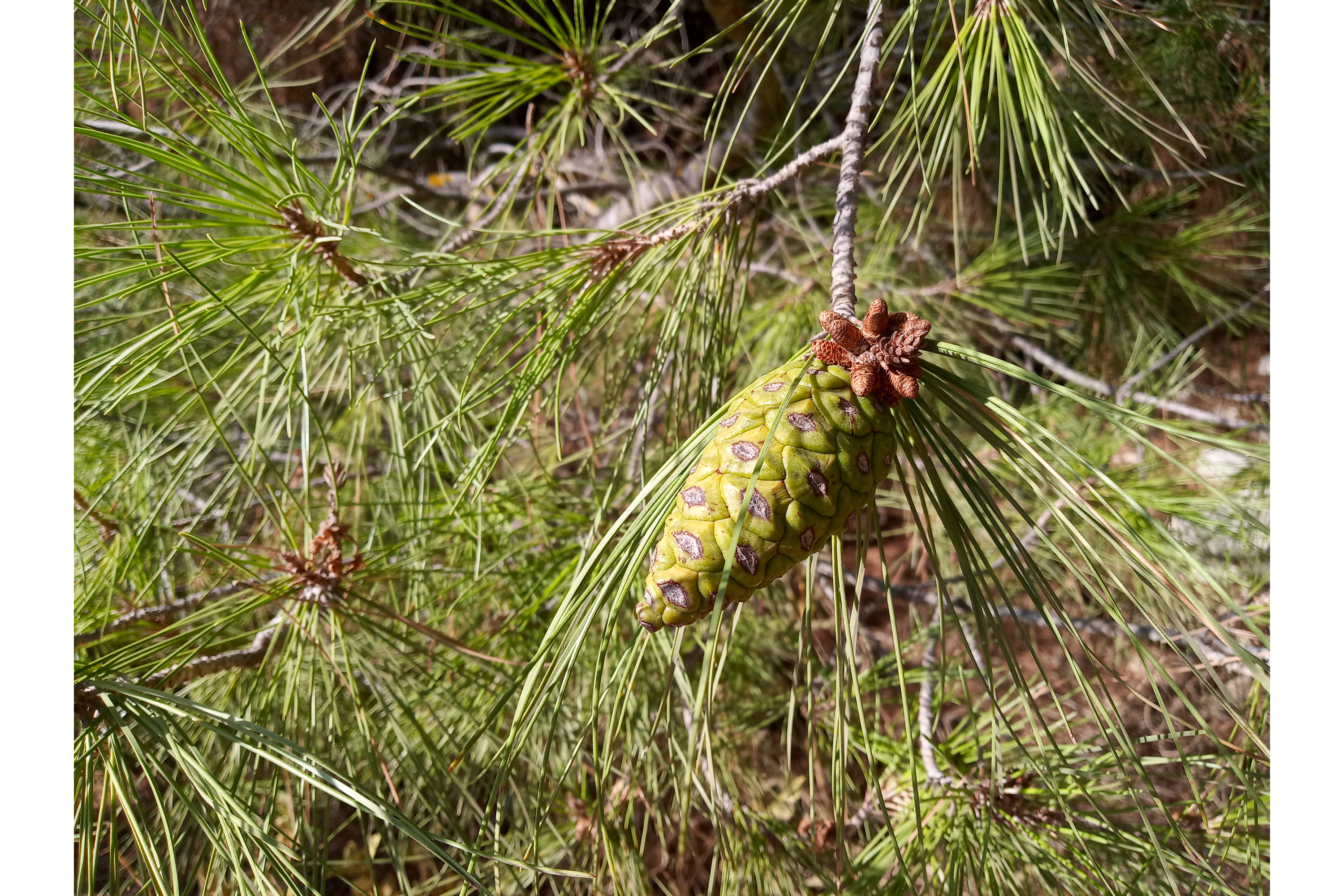Turkish pine
(Pinus brutia)

Description
Pinus brutia, commonly known as the Turkish pine, is a species of pine native to the eastern Mediterranean region. The bulk of its range is in Turkey, but it also extends to southeasternmost Bulgaria, the East Aegean Islands of Aegean Sea, Crete, the Crimea, Iran, Georgia, Azerbaijan, northern Iraq, western Syria, Lebanon and Cyprus. It generally occurs at low altitudes, mostly from sea level to 600 metres (2,000 ft), up to 1,200 metres (3,900 ft) in the south of its range. Turkish pine is also known by several other common names: Calabrian pine (from a naturalised population of the pine in Calabria in southern Italy, from where the pine was first botanically described), East Mediterranean pine and Brutia pine. Pinus brutia is a medium-size tree, reaching 20–35 metres (66–115 ft) tall and with a trunk diameter of up to 1 metre (3.3 ft), exceptionally 2 metres (6.6 ft). The bark is orange-red, thick and deeply fissured at the base of the trunk, and thin and flaky in the upper crown. The leaves (needles) are in pairs, slender, mostly 10–16 cm long, bright green to slightly yellowish green. The cones are stout, heavy and hard, 6–11 cm long and 4–5 cm broad at the base when closed, green at first, ripening glossy red-brown when 24 months old. They open slowly over the next year or two to release the seeds, opening to 5–8 cm broad. The seeds are 7–8 mm long, with a 15–20 mm wing, and are mainly wind-dispersed.
Taxonomic tree:







